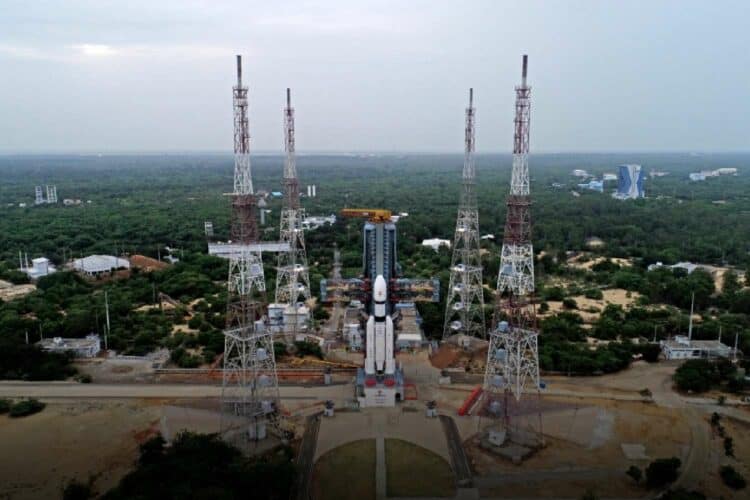India’s space agency, the Indian Space Research Organisation (ISRO), achieved a significant milestone on Friday, 14 July 2023, with the launch of a rocket that aims to land a spacecraft at the lunar south pole.
Here’s what India’s rocket launch to the moon means for the country’s space rankings
This ambitious mission, known as Chandrayaan-3, demonstrates India’s growing prowess as a major space power. In this comprehensive news report, we delve into the details of this historic launch, the significance of the lunar south pole landing, and the advancements it brings to India’s space exploration endeavours.
A Trailblazing Launch
The ISRO’s LVM3 launch rocket gracefully took off from the Satish Dhawan Space Centre, the country’s primary spaceport located in the southern state of Andhra Pradesh.
Captivating television footage showcased the rocket’s fiery ascent, leaving a mesmerising plume of smoke in its wake. The successful liftoff marks a significant step forward in India’s space exploration ambitions.
Watch the complete launch broadcast below:
PLEASE NOTE: The third-party content below is shared on our platform for journalistic purposes. Swisher Post, its parent company, partners and affiliates shall not be held liable for any consequence that arises from the journalistic duties performed in sharing this content.
Advancing Lunar Exploration
Chandrayaan-3’s primary objective is to deploy a lander and rover near the lunar south pole, setting a precedent for lunar exploration. Notably, only three other space agencies—the United States, the former Soviet Union, and China—have accomplished the feat of landing a spacecraft on the moon’s surface.
However, no previous missions have targeted the unexplored lunar south pole.
The Significance of the Lunar South Pole
The selection of the lunar south pole as the landing site holds immense scientific value. This region is believed to contain water ice and various resources that could be instrumental in supporting future manned missions to the moon.
By landing near the lunar south pole, India’s Chandrayaan-3 mission aims to gather crucial data and conduct experiments, furthering our understanding of the moon’s composition and its potential for future human exploration.
Chandrayaan-3’s Mission Components
Chandrayaan-3, which translates to “moon vehicle” in Sanskrit, consists of a two-metre-tall lander designed to deploy a rover near the lunar south pole.
The rover is expected to operate for approximately two weeks, undertaking a series of experiments. This mission builds upon the progress made during India’s Chandrayaan-2 mission in 2020, which successfully deployed an orbiter but faced challenges when its lander and rover crashed near the lunar surface.






